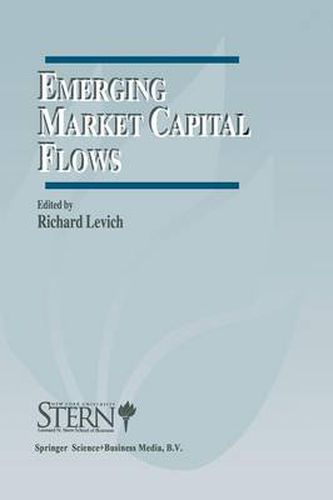Readings Newsletter
Become a Readings Member to make your shopping experience even easier.
Sign in or sign up for free!
You’re not far away from qualifying for FREE standard shipping within Australia
You’ve qualified for FREE standard shipping within Australia
The cart is loading…






This title is printed to order. This book may have been self-published. If so, we cannot guarantee the quality of the content. In the main most books will have gone through the editing process however some may not. We therefore suggest that you be aware of this before ordering this book. If in doubt check either the author or publisher’s details as we are unable to accept any returns unless they are faulty. Please contact us if you have any questions.
In a little over one decade, the spread of market-oriented policies has turned the once so-called lesser developed countries into emerging markets. Many forces have been responsible for the tremendous growth in emerging markets. Trends toward market-oriented policies that permit private ownership of economic activities, such as public utilities and telecommunications, are part of the explanation. Corporate restructuring, following the debt crisis of the early 1980’s has permitted many emerging market companies to gain international competitiveness. And an essential condition, a basic sea-change in economic policy, has opened up many emerging markets to international investors.
This growth in emerging markets has been accompanied by volatility in individual markets, and a sector-wide shock after the meltdown in the Mexican Bolsa and Mexican peso, resulting in heated debate over the nature of these markets. Emerging market capital flows continue to be the subject of intense discussion around the world among investors, academics, and policymakers. Emerging Market Capital Flows examines the issues of emerging market capital flows from several distinct perspectives, addressing a number of related questions about emerging markets.
$9.00 standard shipping within Australia
FREE standard shipping within Australia for orders over $100.00
Express & International shipping calculated at checkout
This title is printed to order. This book may have been self-published. If so, we cannot guarantee the quality of the content. In the main most books will have gone through the editing process however some may not. We therefore suggest that you be aware of this before ordering this book. If in doubt check either the author or publisher’s details as we are unable to accept any returns unless they are faulty. Please contact us if you have any questions.
In a little over one decade, the spread of market-oriented policies has turned the once so-called lesser developed countries into emerging markets. Many forces have been responsible for the tremendous growth in emerging markets. Trends toward market-oriented policies that permit private ownership of economic activities, such as public utilities and telecommunications, are part of the explanation. Corporate restructuring, following the debt crisis of the early 1980’s has permitted many emerging market companies to gain international competitiveness. And an essential condition, a basic sea-change in economic policy, has opened up many emerging markets to international investors.
This growth in emerging markets has been accompanied by volatility in individual markets, and a sector-wide shock after the meltdown in the Mexican Bolsa and Mexican peso, resulting in heated debate over the nature of these markets. Emerging market capital flows continue to be the subject of intense discussion around the world among investors, academics, and policymakers. Emerging Market Capital Flows examines the issues of emerging market capital flows from several distinct perspectives, addressing a number of related questions about emerging markets.